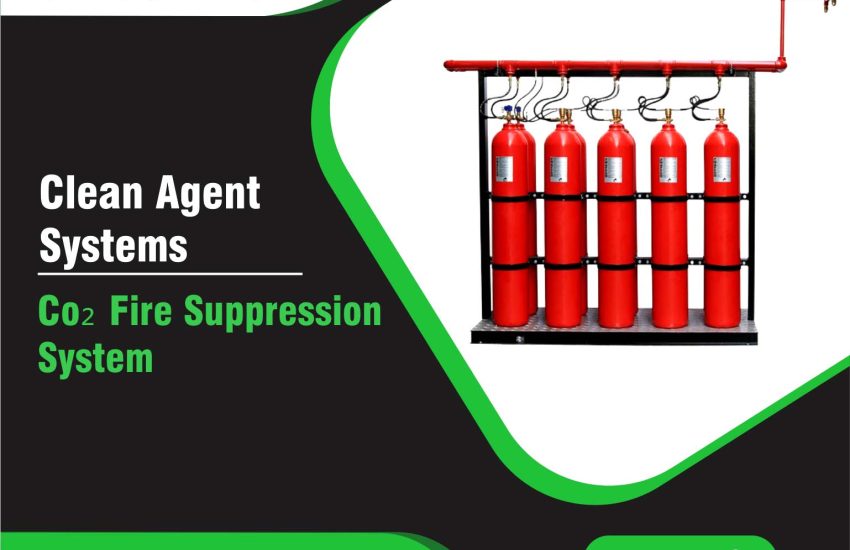CO₂ Fire Suppression System is a highly effective and widely used fire protection solution, designed to extinguish fires by reducing oxygen levels in the affected area. This system works through the release of carbon dioxide (CO₂), which displaces oxygen, thereby suffocating the fire. CO₂ Fire Suppression Systems are ideal for protecting sensitive environments such as data centers, electrical rooms, and industrial facilities, where water-based suppression methods could cause significant damage. This article covers the specifications, features, and benefits of CO₂ Fire Suppression Systems, incorporating SEO-friendly keywords.
What is a CO₂ Fire Suppression System?
A CO₂ Fire Suppression System is an automatic or manual system that uses carbon dioxide to suppress fires in enclosed spaces. It operates by releasing large volumes of CO₂ into the affected area, which reduces the oxygen concentration to a level that no longer supports combustion. These systems are most effective in high-risk environments where sensitive equipment or materials could be damaged by water or foam-based suppression systems.
CO₂ Fire Suppression System Specifications
1. Design and Configuration
CO₂ Fire Suppression Systems come in various configurations to suit different applications. These systems include:
- Total Flooding Systems: Designed to discharge CO₂ in a fully enclosed space, reducing oxygen levels and extinguishing the fire.
- Local Application Systems: Used for protecting specific hazards or equipment, focusing CO₂ release on localized areas.
System Components:
- CO₂ Cylinders: These are pressurized containers that store the CO₂ gas until release.
- Distribution Piping: Stainless steel or other durable materials are used to ensure efficient CO₂ distribution across the protected area.
- Nozzles: Discharge nozzles release the CO₂ into the room in a uniform manner.
- Control Panel: Monitors the system’s status and triggers the release of CO₂ in the event of a fire.
- Manual Activation: Provides an option for manual activation in emergency situations.
2. CO₂ Cylinder Capacity
The capacity of CO₂ cylinders depends on the size of the area to be protected. Each cylinder typically holds between 50-200 lbs of CO₂ gas. The number of cylinders required will vary depending on the volume of the protected space and the design of the system.
- Standard Cylinder Sizes: 50 lbs, 100 lbs, 150 lbs, and 200 lbs
- Cylinder Pressure: The cylinders are pressurized at around 850-900 psi at 70°F to ensure rapid CO₂ discharge when needed.
- Total System Capacity: The total number of cylinders required depends on the room size, fire classification, and design parameters.
3. Installation and Activation Mechanisms
Installers can configure CO₂ Fire Suppression Systems in various ways, tailoring components to meet specific needs. Detection systems like smoke detectors, heat detectors, and flame detectors commonly trigger CO₂ release. In the event of a fire, the detection system activates the control panel, which then releases the CO₂ gas into the room.
- Automatic Activation: When the fire detection system senses a fire, the CO₂ is automatically discharged.
- Manual Override: Provides an additional safety measure for manual release in case of system malfunction or failure.
- Pre-Discharge Warning: A brief warning is often given before the CO₂ release, alerting personnel to evacuate the area.
4. Safety and Environmental Considerations
While CO₂ is an effective fire suppressant, it is essential to consider its potential health risks, particularly in occupied spaces. The system should only discharge CO₂ in unoccupied or controlled environments. Key safety features include:
- Occupant Evacuation: A CO₂ fire suppression system should never discharge while personnel are present in the protected area. Alarm systems and evacuation mechanisms are crucial.
- CO₂ Concentration: The system lowers oxygen levels to around 12-15%, a level that cannot sustain fire but remains safe for equipment and effective for fire suppression.
5. Maintenance and Inspections
Regular inspections and maintenance are essential to ensure that CO₂ Fire Suppression Systems remain fully functional. The system should undergo:
- Routine Inspections: Checking CO₂ cylinder pressure, nozzle positions, and piping integrity.
- Testing: Periodic tests of the system’s detection and activation mechanisms.
- Cylinder Refilling: After each activation, CO₂ cylinders should be refilled to maintain system readiness.
Key Benefits of CO₂ Fire Suppression Systems
- Minimal Water Damage: Unlike sprinkler systems, CO₂ does not cause water damage, making it ideal for protecting sensitive electronics and machinery.
- Fast Response: CO₂ suppresses fires quickly by reducing oxygen levels, limiting fire spread and damage.
- Environmentally Friendly: CO₂ is non-toxic, and since it naturally exists in the atmosphere, it poses little environmental threat.
- Effective for High-Risk Areas: Particularly useful in areas with high-value assets like server rooms, control rooms, electrical panels, and other delicate environments.
- No Residue: Unlike foam or powder-based suppression systems, CO₂ does not leave any residue, making post-fire cleanup simpler and less costly.
Conclusion
A CO₂ Fire Suppression System offers an efficient, reliable, and non-damaging solution for fire protection, especially in high-risk environments like data centers, control rooms, and industrial facilities. Its ability to suppress fires quickly and with minimal collateral damage makes it an invaluable tool for safeguarding sensitive equipment. By understanding the specifications and benefits of CO₂ Fire Suppression Systems, you can choose the right solution to meet your facility’s unique needs and ensure compliance with safety standards.


